The stresses in higher education recruitment are real and plentiful. Per a survey in the Chronicle of Higher Education last January, roughly half of all colleges failed to meet their enrollment goals for Fall 2017. Schools are beholden to quickly changing demographics, which are impacting U.S.-based institutions in big ways. With ongoing and forecasted declines in the number of American high school graduates, competition to recruit a dwindling pool of students is increasingly fierce.In an effort to understand what colleges and universities are focused on to recruit undergraduate students, Formstack recently surveyed schools to get a sense of what’s changed, what’s working, and what’s holding them back.
Survey Overview
We collected 140 responses on our survey. Here's a quick look at the survey participants:
- 53 from four-year public institutions
- 65 from four-year private institutions
- 14 from two-year public institutions
- 8 from two-year private institutions
The sizes of participating schools ranged from under 2,000 full-time equivalent undergrads to more than 30,000. More than half of respondents had enrollments under 5,000 undergrads, and nearly a quarter of submissions came from schools with enrollments between 10,000 and 30,000 undergrads.
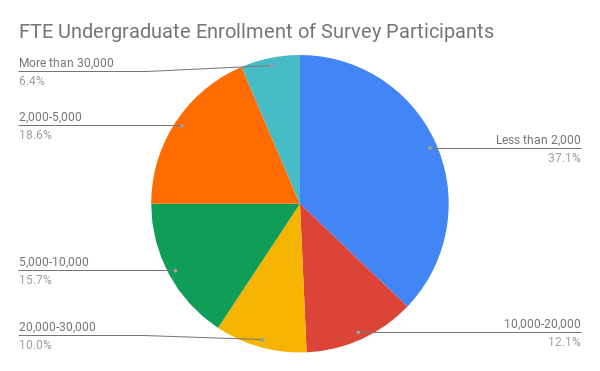
Areas of focus in the survey included admissions counselor travel and outreach methods, as well as campus visits and other forms of communication with prospective students.
Survey Results
Campus Visits
Survey respondents rallied behind one clear trend that’s emerged in the past half-decade—increased focus on campus visits. The need to show off campus amenities isn’t new. But given increased competition for students, making sure visitors feel welcome and tour the latest new building has become paramount to standing out in the crowd.Comparing present efforts to those five years ago, 65% of all surveyed schools reported an increase in time spent on major campus visit events. Only 4% of schools reported spending less time on major visit events.
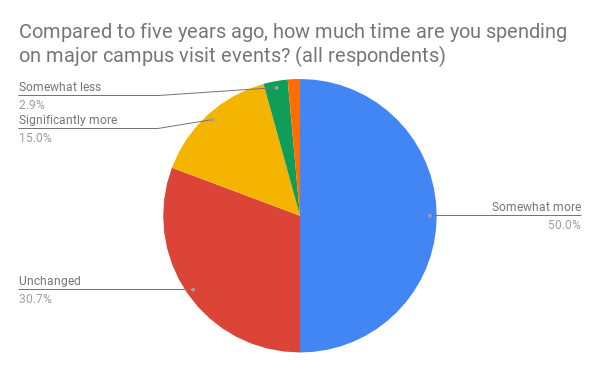
Similarly, more than half of schools (58%) acknowledged an increase in time dedicated to the individual campus visit experience. Only 9% said less time was now being spent on individual visits.
Read More: Tips for Connecting with Students
Communication
Focal points for recruitment communication among surveyed schools reflected some institutional differences.The clearest divergence of surveyed communication tactics proved to be sending text messages.In selecting from a list of which methods of communication their school uses to reach prospects, respondents from private four-year institutions were almost twice as likely to send text messages than were their public university counterparts.
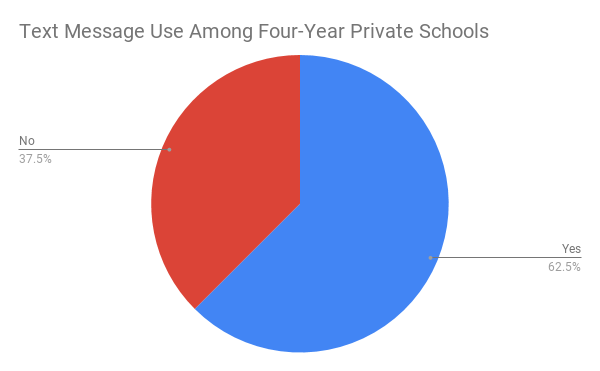

When asked to choose a primary communication focus, four-year private schools listed a wider variety of top priorities than did public universities. More than a third (35%) of private schools listed individual campus visits as their No. 1 focus, which was three times the rate of public universities (13%). Conversely, recruitment communication focuses for four-year public universities trended more off-campus. Nearly half (49%) of public universities reported an increase in counselor travel compared to five years ago. Among their private peers, 32% said they were traveling more. Correspondingly, public university respondents were three times more likely than privates (19% vs. 6%) to list meeting prospects at their high schools as a top communication priority. Public schools were also significantly more likely to emphasize attending college fairs. While only 8% of four-year private colleges listed college fairs as their No. 1 student-communication priority, that number was 23% for public survey-takers. Time spent at college fairs also increased more among the survey's public school sample than it did among private colleges:
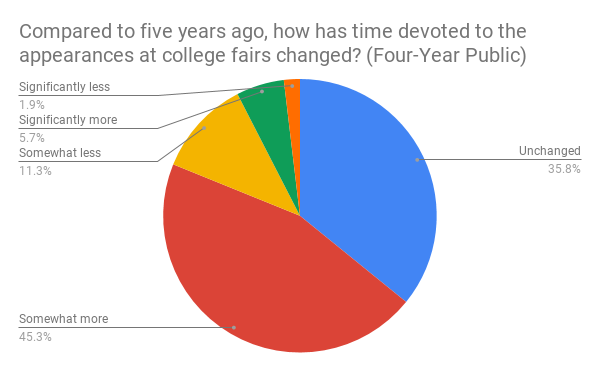
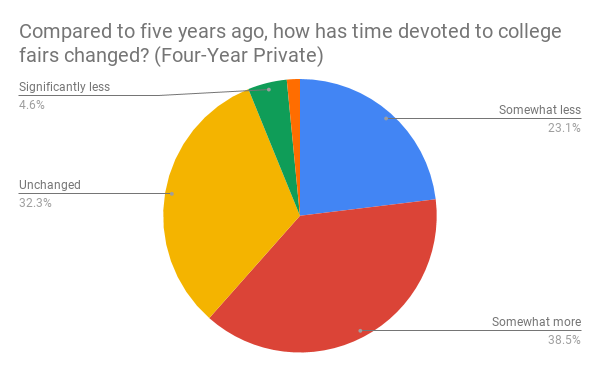
At least part of that off-campus travel disparity could be chalked up to differences in staffing resources. The average number of admissions counselors among four-year public respondents was 16, versus 12 at four-year private schools.Among all surveyed schools, a sense of improved communication also emerged. Compared to five years ago, 67% of respondents indicated that their overall ability to connect with students has improved. Only 6% felt that ability had declined.

Addressing why communication is better now, one survey respondent from a four-year public university said recruiters are doing a better job "paying attention to how students communicate and reaching them where they're comfortable being most transparent about their experiences...and then tailoring future events and services toward that feedback.”
Technology
Across all institution classifications, respondents praised technology and social media, as well as better segmenting and targeting, as key in their strides in connecting with prospective students.In the first quarter of 2019, Formstack will conduct a follow-up survey focused on the technical side of student recruitment. Stay tuned!
Higher ed recruitment is constantly changing. Check down below what you should do to update your tech stack!











